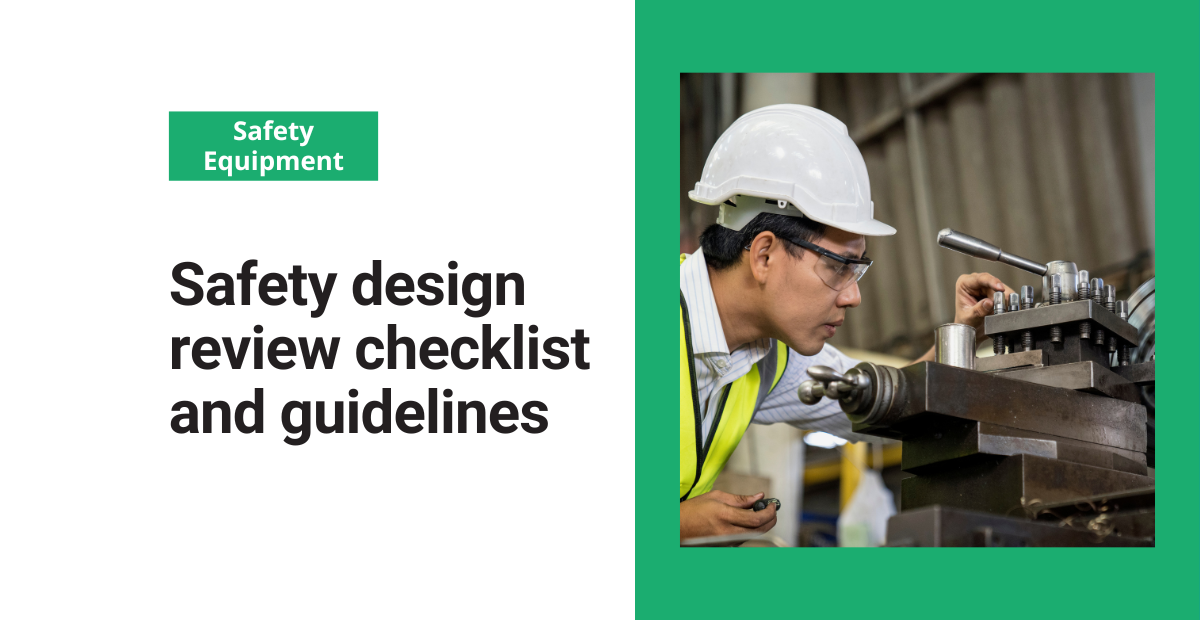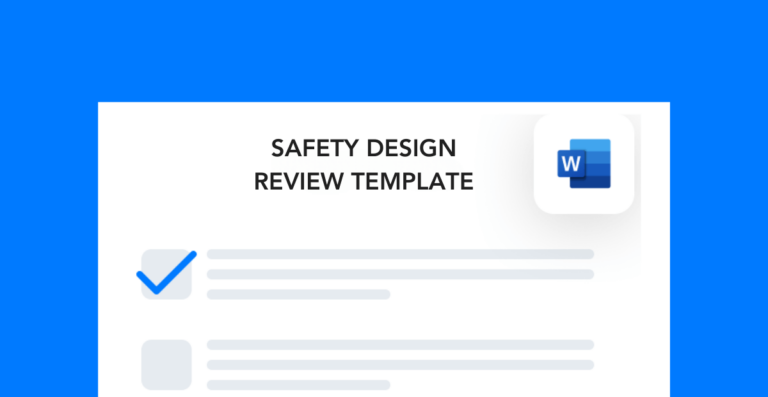One of the biggest considerations when designing a product or process is safety. Regardless of whether it’s a software system or heavy machinery, all products have the potential to cause harm.
In this post, we’ll offer an overview of the safety review process and provide a checklist that you can use to conduct a review at your site.
Purpose of a safety design review
A safety design review is a process to identify issues with an equipment, process, etc. design that may cause risks to employee wellbeing.
It involves the following steps:
- Examine the design of a system/piece of equipment
- Consider the impact of the design on safety (both to workers and the environment)
- Take corrective actions to mitigate potential risks
- Document all the measures taken to eliminate safety concerns
This process ensures that your team makes all the necessary safety considerations before rolling out a new or modified system. Note that the review process depends on the actions you take afterwards. If you don’t proactively address your findings, you might as well not complete the review in the first place.
Checklist for reviewing designs
When you perform a design review, there are many different considerations to make. The checklist template below includes 80 questions that cover the following areas of safety:
- Temporary design changes
- General safety
- Environmental considerations
- Process safety
- Process and operations
- Instruments and controls
- Electrical systems
- Combustion hazards
- Structural considerations
- Quality and customer
- Process and product capability
- People and training
You can use the template to perform and document a detailed design review. This is a general safety design review checklist of all the things you’ll want to do throughout this process:
- Observe the design in its current state and make note of existing hazards.
- Consider whether changes you’d make to the design could create new hazards.
- Determine the risk severity of the design.
- Decide which changes (if any) you’re going to make to improve the safety of the design.
- Implement risk control measures and perform tests to ensure their effectiveness.
- Evaluate the safety of the design after changes have been made.
- Establish emergency response protocols for the existing safety hazards.
- Update your control documents to reflect the planned design.
Remember that the goal of this entire review process is to identify and control risks. Take your time in the beginning to really understand the impact of the system design.
Change management of design modifications
If you make any modifications that impact the safety of the system, you should implement them using a change management process.
Change management ensures that major modifications don’t interrupt the existing risks presented by a process, piece of equipment, etc. Depending on the scale of the changes, you may want to consider performing the safety design review checklist each time you consider them.
The Frontline MOC (management of change) software tool provides a workflow that your team can follow to ensure the safe implementation of design changes. If you’re interested in learning more about this software tool, check out this free webinar or schedule a demo with our team.




